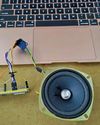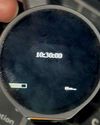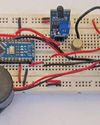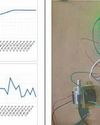
Since then, there has been a lot of discussion around edge computing and the Internet of Things (IoT). However, the technology has really come of age now, thanks mainly to the rising interest in artificial intelligence (AI) and, of course, a much-needed fillip from fast 5G networks and powerful mobile processors.
Edge computing is basically a distributed computing framework that moves processing and storage to the edge of the network—that is, as close as possible to the users and sources of data, such as the Internet of Things (IoT) or local edge servers. So, why would someone want to do that? Because, speed matters! Today, everyone wants instant answers and solutions, and the cloud alone cannot handle this crowd. This is true not just for futuristic or high-stake applications like self-driving cars and military operations but also for common ones like shopping and marketing campaigns.
Delays are costly
From industries to automobiles and traffic signals, every device is racing to become smart. Relying solely on the cloud to accommodate this exponential growth of users would result in increased latency—an intolerable outcome. And, it can be more serious than a customer getting irritated by a delay in connecting to a local restaurant’s menu. A millisecond’s delay in decision-making in an autonomous car could cause an accident, or lack of connectivity in a surveillance drone could mean not spotting an impending missile attack! In today’s scenario, reducing latency is of utmost importance. On-device processing, in tandem with the cloud and on-premise data centres, can handle this situation very well. It also brings with it other perks like creating personalised customer experiences and improved security.
This story is from the September 2023 edition of Electronics For You.
Start your 7-day Magzter GOLD free trial to access thousands of curated premium stories, and 9,000+ magazines and newspapers.
Already a subscriber ? Sign In
This story is from the September 2023 edition of Electronics For You.
Start your 7-day Magzter GOLD free trial to access thousands of curated premium stories, and 9,000+ magazines and newspapers.
Already a subscriber? Sign In

STK435 IC-Based STEREO AMPLIFIER
This stereo AF amplifier uses the STK435 IC, a highly popular choice due to its simplicity.

A SEWER DRAIN SHIELD For Smart Cities
Drainage systems are vital for storm water management but often transport pollutants, especially plastics, to rivers and oceans, harming ecosystems.

ESP32 SPEECH FUNCTION: Text To Speech
Speech capability in technology primarily has two dimensions: text to speech (TTS) and speech to text (STT). This device focuses on TTS.

World's Smallest Programable INDUSPHONE DESIGN
This is the second part of designing the world’s smallest phone, where the UI is integrated with the basic functions of the phone.

FLAME-SENSING FIRE ALARM Using An Arduino Nano
Fire safety alarms are crucial in both residential and industrial environments.

loT-Based Distribution Transformer CONDITION MONITORING SYSTEM
The proposed IoT-based distribution transformer condition monitoring system enables real-time monitoring of distribution transformers, identifying such deviations as overload conditions and overheating.

Wi-Fi 6 AND Wi-Fi 7 Powering The Next Wave of Smart Connectivity
Wi-Fi 6 leads with faster data rates and reduced latency while upcoming Wi-Fi 7's backward compatibility will facilitate gradual upgrades from Wi-Fi 6, easing transitions. However, advanced features like multi-link operation (MLO) and ultra-low latency may command a premium, making Wi-Fi 7 suited for high-end applications.

CHARGE FORWARD: High-Voltage Batteries And MSMEs Can Fuel INDIA'S EV REVOLUTION
A nuanced explanation of low- and high-voltage EV batteries by Dr Gokhale, Vice President for Battery Technology at JSW Energy, illuminates their advancements and influence. The essential role of MSMEs and academia in developing a strong EV ecosystem emerges, marking their significance for India's push towards self-reliance in this innovative field.

"MILES TO GO Before I Sleep"
A teacher illuminates the path to success through the light of knowledge, yet some teachers extend that light to society through their contributions and research. Known as the architect of the modern M3 electronic voting machine (EVM) and the voter verifiable paper audit trail (VVPAT) that transformed India's democratic process, Prof. (Dr) Rajat Moona's journey began in the modest town of Bareilly. Here is his story, as recounted to and written by EFY's Yashasvini Razdan.

STARTUPS & INNOVATORS
1 One Charger To Charge All Your Devices | 2 Harnessing AI Technology For Efficient Pest Management | 3 Wireless Light-Based Communication With Velmenni's Technology